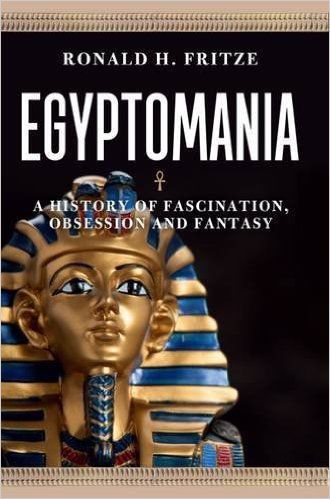Book review: ‘Egyptomania’
Published 12:30 am Sunday, April 9, 2017

- Book review: 'Egyptomania'
”Egyptomania: A History of Fascination, Obsession and Fantasy” by Ronald H. Fritze. London: Reaktion Books, 2016. 444 pages, $35 (hardcover).
In his introduction, author Ronald Fritze defines Egyptomania as “a fascination with ancient Egypt in its many aspects.” He sees it as a phenomenon that has existed for 3,000 years or more and can take scholarly and popular culture forms. The Egypt of myth and legend attracts the most interest. Fritze states that his book “will primarily concentrate on the idea of Egypt and Egyptomania in popular culture.” The author is dean of arts and sciences and professor of history at Athens State University in Alabama. Among his previous works is one that might be increasingly relevant for present times: “Invented Knowledge: False History, Fake Science and Pseudo-religions.”
In this book, Fritze opens with a brief overview of ancient Egyptian history and then considers how other peoples began Egyptomania through their fascination with ancient Egypt. In several chapters he examines views of Hebrews, Greeks, Romans, Muslims and interested travelers and scholars from the Renaissance to the Enlightenment and on to Napoleon’s expedition to Egypt and the world-famous discovery of King Tut’s tomb in 1922. Fritze points out that Europeans of the Middle Ages removed the pyramids from their lists of the seven wonders of the world. Some early Christians and their successors in the Middle Ages interpreted the pyramids as “the Granaries of Joseph.” I was surprised to read that Edward Gibbon early in his studies at Oxford wrote a book about the pharaoh Sesostris long before he took on the decline and fall of the Roman Empire and he burned the Egyptian manuscript 20 years later. Although some readers may have thought that the origin of the mummy’s curse, a major theme in Egyptomania, started with King Tut’s tomb, Fritze points out that Bram Stoker’s novel “The Jewel of the Seven Stars,” published in 1903, features an Egyptologist who collects mummies and other Egyptian artifacts and when Queen Tera’s mummy is unwrapped she gets revenge by destroying many of the main characters. Stoker also hints that the Egyptologist’s wife may be the reincarnated Queen Tera.
In his chapter on “Occult Egyptomania” Fritze discusses groups such as the Rosicrucians, Freemasons and the Theosophical Society and how some individuals in these groups tied their group’s secret knowledge to supposed origins in ancient Egypt. Madame Helena Blavatsky (1831-1891), founder of the third group, claimed to have been in contact with the Masters, “people who had gone through many reincarnations accompanied by spiritual growth.” For her book “Isis Unveiled” she claimed to have communicated with the Masters through “precipitated letters” that had appeared out of thin air. However, several of these texts proved to have been lifted from works by earlier writers without attribution. Other chapters deal with Afrocentrism and African American Egyptomania and topics such as “pyramids, Pyramidology and Pyramidiots” and the ancient astronaut/ancient alien phenomenon alleging visits to earth by extraterrestrials.
The author provides 48 pages of references, a select bibliography and an index. Although Fritze’s shift from chronological to topical organization works with most of the 20th century chapters, I found it very confusing in chapter 12 on “Egyptomania and Fiction,” where he discusses numerous titles of books and movies and where I think a chronological approach would have been helpful. Sometimes titles are mentioned in one sentence with little detail, but the topic is an important one for Egyptomaniacs and is still interesting despite jumping around and discarding too quickly.
Two items not included in the survey of movies and television series with Egyptian themes are the television show “Isis,” where a teacher could spin around and assume that goddess’ powers, and the four “Scorpion King” films, which have little to do with historical reality. In discussing “The Egyptian Revival” and influences on 19th century architecture, the author says that 15 American cemetery entrances built between 1830 and 1850 featured Egyptian motifs, yet he does not explain where these were located and many readers would have found that interesting. Fritze also discusses the Egyptian themes in decorating the interior of the downtown Presbyterian Church in Nashville, but the photograph provided of this impressive church in inadequate. Although there are some typographical errors and some of the other photos are also “washed-out,” these problems are minor and I recommend the book highly for anyone who is fascinated by ancient Egypt and who may already be or may become an Egyptomaniac.
– Reviewed by Richard Weigel, Western Kentucky University History Department.
The author will speak at WKU Libraries’ Far Away Places Series at 7 p.m. April 13 at Barnes & Noble Booksellers on Campbell Lane. A book signing will follow.






